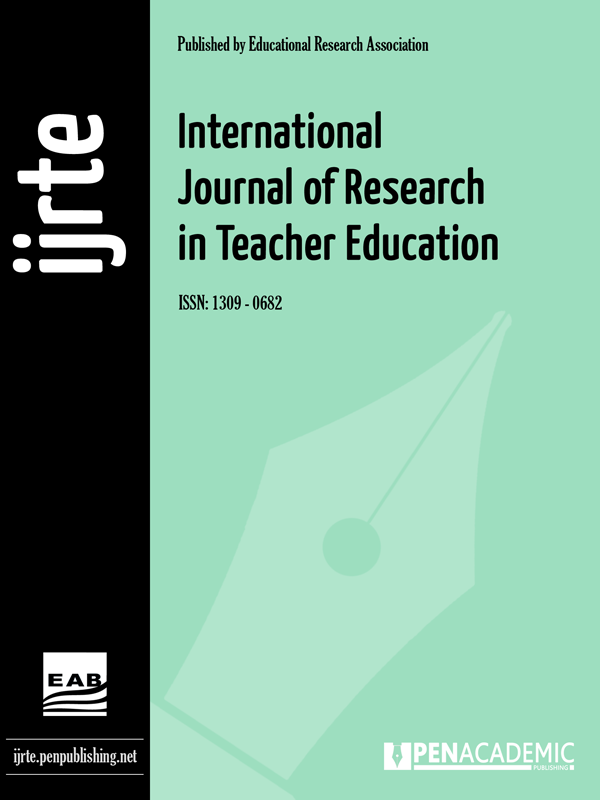Research article | Open Access
International Journal of Research in Teacher Education 2021, Vol. 12(2) 29-35
The Necessity of Teaching Pragmatics in Iraqi Foreign Language Classrooms: Focus on Secondary Schools
pp. 29 - 35
Publish Date: June 29, 2021 | Single/Total View: 57/541 | Single/Total Download: 69/1.010
Abstract
At present, English plays a key role in the world and it is known as an international language which enables people to connect all around the world and English can be called as a global language because it is helpful in the processes of globalization. As English has played an indispensable role in global communication, it is essential for English language users, both native and non-native, to use clear, comprehensible and educated English that allows smooth communication and avoids misunderstandings in social interactions. Hence, pragmatic competence can facilitate language users to successfully achieve their communicative aims in intercultural communication. Consequently, pragmatic elements have noticeable roles in communication between speakers because such elements can hinder inaccuracies and misunderstandings during communication. This paper discusses pragmatics as a branch of linguistics and its significant role in learning English as a second and a foreign language. In pragmatics, meaning in communication can be classified into two elements; verbal and nonverbal. This classification depends on the contexts, relationship between utterers, and social factors. Teachers should teach pragmatic competence in second language English classes through different activities and tasks.
Keywords: pragmatics, pragmatics competence, English language teaching, language competencies
APA 7th edition
Al-Abdali, A.I.E., & Maniam, M. (2021). The Necessity of Teaching Pragmatics in Iraqi Foreign Language Classrooms: Focus on Secondary Schools. International Journal of Research in Teacher Education, 12(2), 29-35.
Harvard
Al-Abdali, A. and Maniam, M. (2021). The Necessity of Teaching Pragmatics in Iraqi Foreign Language Classrooms: Focus on Secondary Schools. International Journal of Research in Teacher Education, 12(2), pp. 29-35.
Chicago 16th edition
Al-Abdali, Ahmed Ibrahim Elttayef and Mahendran Maniam (2021). "The Necessity of Teaching Pragmatics in Iraqi Foreign Language Classrooms: Focus on Secondary Schools". International Journal of Research in Teacher Education 12 (2):29-35.
Bachman, L. (1990). Fundamental consideration in language testing. New York: Oxford University Press.
Bachman, L., & Palmer, A. (1996). Language testing in practice: Designing and developing useful language tests. Oxford: Oxford University Press.
Canale, M., & Swain, M. (1980). Theoretical aspects of communicative approaches to second language teaching and testing. Applied Linguistics, 1, 1-47.
Crystal, D. (1985). A dictionary of linguistics and phonetics (2nd Ed.). Oxford: Blackwell.
Crystal, D. (1997). English as a global language. Cambridge: Cambridge University Press.
Erton, I. (2007). Applied Pragmatics and Competence Relations in Language Learning and Teaching, Journal of Language and Linguistic Studies, Vol.3, No.1, April 2007
Held, D., McGrew, A., Goldblatt, D., & Perraton, J. (1999). Global transformations: Politics, economics and culture. Cambridge: Polity Press.
Kachru, B.B., & Nelson, C.L. (2001). World Englishes. In A. Burns, & C. Coffin (Eds.), Analyzing English in a global context (pp. 9-25). London and New York: Routledge.
Kasper, G. (1997). Can pragmatic competence be taught? NFLRC NetWork (6) Honolulu: University of Hawaii, Second Language Teaching and Curriculum Center. Retrieved from http://nflrc.hawaii.edu/networks/NW06/default.html.
Leech, G. (1983). Principles of pragmatics. London: Longman.
Levinson, S. (1983). Pragmatics. Cambridge: Cambridge University Press.
Mey, L. J. (1993). Pragmatics: An Introduction. Oxford: Blackwell Publishers.
Morris, C. H. (1938). Foundation of the theory of signs. In O. Neurath (Ed.), International Encyclopedia of Unified Science (vol. 1) Chicago: University of Chicago Press.
Niezgoda, K., & Röver, C. (2001). Pragmatic and grammatical awareness: A function of the learning environment. In K. R. Rose & K. Kasper (Eds.), Pragmatics in Language Teaching (pp.1-12). Cambridge: Cambridge University Press.
Richards, J.C. (2001). Communicative Language Teaching Today. New York: Cambridge University Press.
Roever, C. (2010). Researching pragmatics. In B. Paltridege & A. Phakiti (Eds.), Continuum Comparison to Research Methods in Applied Linguistics (pp. 240-255). London, New York: Continuum International Publishing Group.
Rose, K. R. (1994). Pragmatic Consciousnes s-Raising in an EFL Context.
Rose, K. R., & Kasper, K. (Eds.). (2001). Pragmatics in language teaching. Cambridge: Cambridge University Press.
Schmidt, R. (1993). Consciousness, learning and interlanguage pragmatics. In G. Kasper & S. Blum-Kulka (Eds.), Interlanguage Pragmatics (pp. 21-42). New York: Oxford University Press.
Stern, H. H. (1983). Fundamental Concepts of Language Teaching. Oxford: Oxford UP
Taguchi, N. (2003). Pragmatic performance in comprehension and production of English as a second language. Dissertation Abstracts International, 65(01), 134A. (UMI No. 3118493)
Thomas, J. (1995). Meaning in interaction: An introduction to pragmatics. London: Longman.
Trosborg, A. (1995). Interlanguage pragmatics: Requests, complaints and apologies. Berlin, New York: Mouton de Gruyter.
Wardhaugh, R. (1987). Languages in competition. Dominance, diversity, decline. Oxford: Ba sil Blackwell.
Yule, G. (1996). Pragmatics. Oxford: Oxford University Press.
